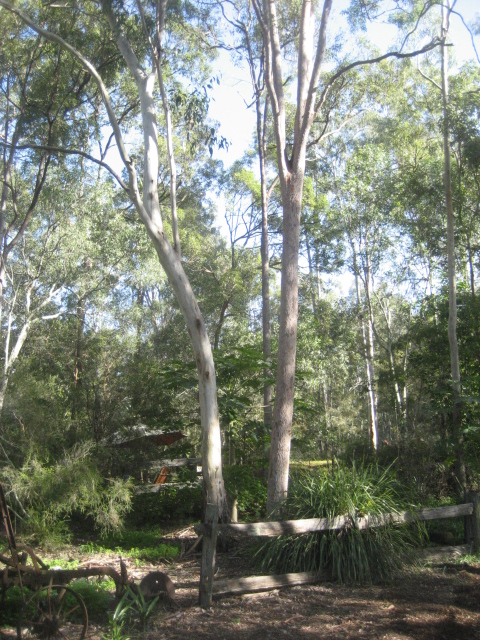HP 6.8: The Dry Australian Bush Garden Room
Australian Bush Gardens are characterised by the use of plants native to the Australian continent. Because these plants often have to survive during many dry times, the plants have leaves that are fine leaves often with leaves that have outer tough surfaces to minimise water loss. They often have hard woody seed pods eg. banksias or the hard woody capsules eg. all the many species of gum trees. The seeds inside these woody seed pods are released by hot bush fires. The seeds are released by the heat so that the seeds fall out in a few days time and fall on fresh burnt ground. The bush quickly regenerates after bush fires.
These plants often have unusual flowers in bright colours to attract birds eg. grevilleas. See the photos below. The birds dip into the flowers for the nectar there and at the same time pollinate the flowers. Seeds develop as a result.
See the photos on this website: Images for Australian flora
The use of native plants and the Bush Garden style truly flourished in Australia in the 1950’s and 60’s. While Robin Boyd was writing about the compatibility of native plants and modern houses, landscape designers Edna Walling, Gordon Ford and Ellis Stones led the way with gardens of predominantly Australian plants and rustic bush elements.
In his book The Natural Australian Garden, Gordon Ford speaks of a new nationalism, the breaking of cultural dependence on Britain and Europe and a search for sense of place. Australian gardeners, homeowners and designers were becoming increasingly interested in the traditional bush environment and the use of indigenous plants. Dry gardens with mulch floors replaced English style lawns as an awareness of water conservation and adapting gardens to the Australian climate was increasing (Ford 1999, p38).
Nation-wide promotion of the use of Australian plants was achieved with the creation of the Society for Growing Australian Plants in 1957 and the publication of their journal Australian Plants (which continues today). The journal contained high-quality coloured illustrations which ensured that readers could fully understand the benefits of Australian native plants in the garden (Aitken 2010, p202).
Not only are they sustainable, with lower maintenance requirements than other gardens, but native plants are surprisingly easy to maintain and propagate, they’re fauna friendly and are generally less water hungry than other plants.
__________________________________________________________________________
Grevilleas produce dominant golden or red flowers. The one predominant
feature about about all Australian plants from dry environments is
their finely divided leaves with brightly coloured flowers. These attract
birds like the Blue-faced Honeyeater shown below. We often see these birds
hanging upside down outside, sipping the nectar at an outside Grevillea
flower near a glass window.
Brown bark falls off a eucalypt tree to leave beautiful bark patterns on the ground.
Every year this prickly-leaved paperbark bush (Melaleuca nodosa) bears
masses of small cream ball like flowers for weeks at a time.
A red Grevillea flower
The front garden area with stands of onsite eucalypt trees behind.
A transplanted grass tree which I bought very cheaply from one of the
landscape suppliers to the World Expo in Brisbane in 1988. This is worth a
fortune now and it is now illegal to dig out out of the
ground to sell them. You could get a $10,000.00 fine.
See the website: The Grass Tree: Its Uses and Abuses
____________________________________________________
See the next post: Post 9: Pots and Hanging Baskets used around the House and in the Garden
____________________________________________________















